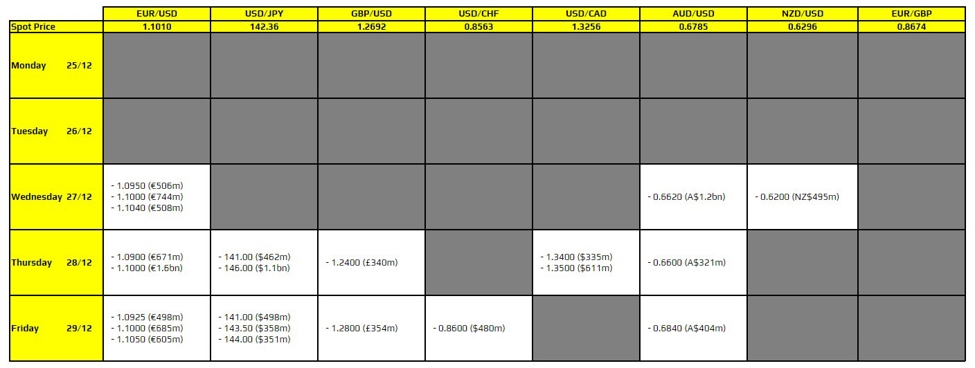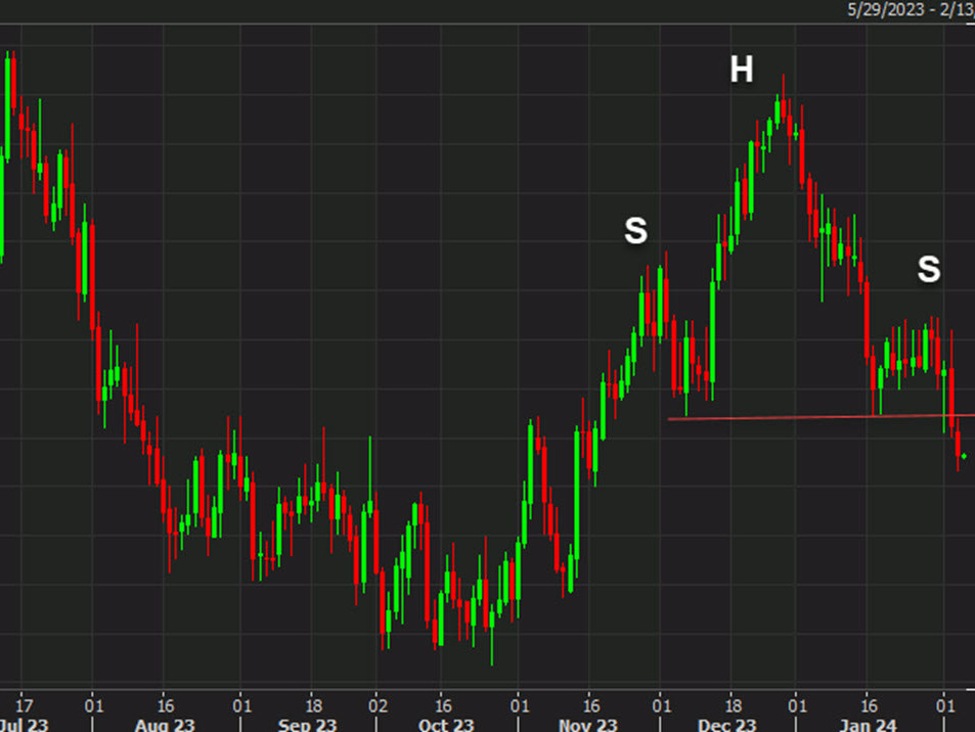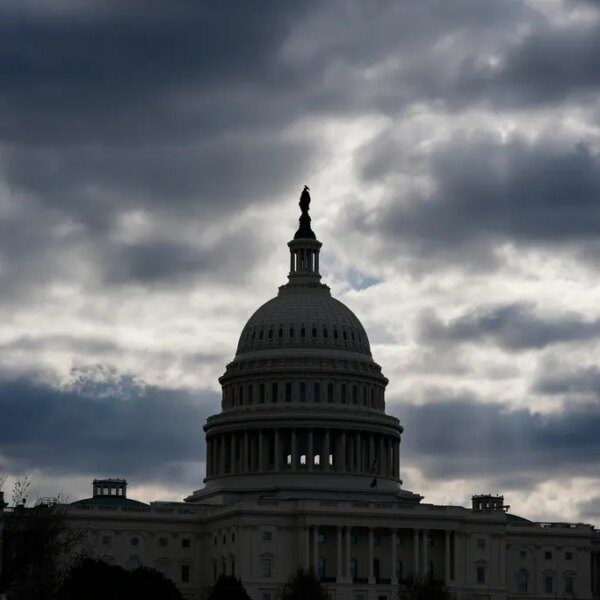- Mon: US Presidential Inauguration, PBoC LPR, Eurogroup Meeting; German Producer Prices (Dec)
- Tue: UK Unemployment/Wages (Nov), German ZEW (Jan), Canadian CPI (Dec), New Zealand CPI (Q4)
- Wed: South African CPI (Dec), Japanese Trade Balance (Dec)
- Thu: Norges Bank & CBRT Policy Announcements; US Jobless Claims (w/e 18th), Canadian Retail Sales (Nov), Japanese CPI (Dec), Swiss KOF (Jan)
- Fri: BoJ Policy Announcement; UK GfK (Jan), EZ, UK & US Flash PMIs (Jan)
PBoC LPR (Mon):
The PBoC will release its Loan Prime Rates (LPRs) next week in a decision that comes amid efforts to balance economic support and manage currency challenges, as the Chinese economy continues to tackle weak consumer demand, deflation, and a troubled property sector. The PBoC is expected to maintain its benchmark lending rates, with the 1-year and 5-year LPRs steady at 3.1% and 3.6%. As a reminder, last month China left its LPRs unchanged and analysts at the time suggested the Federal Reserve’s reduced projections for rate cuts in 2025 will have a limited impact on China’s monetary policy, though pressure on the yuan could persist. Speaking at the Asia Financial Forum in Hong Kong earlier this week, PBoC Governor Pan outlined the use of tools such as interest rate adjustments and reserve ratio requirements (RRR) to stimulate growth amid geopolitical uncertainties in the run-up to the Trump administration.
UK Unemployment/Wages (Tue):
Expectations are for the 3M unemployment rate in November to have held steady at 4.3% with 3M/YY average earnings forecast rising to 5.5% from 5.2% (no other consensus metrics are available at the time of writing). As a reminder, the prior release saw the unemployment rate hold steady at 4.3% with greater attention on the larger-than-expected uptick in wage growth that underscored the MPC’s decision to leave rates on hold at the December meeting. This time around, Pantheon Macroeconomics expects “unchanged payrolls month-to-month in December, as tax hikes weigh on hiring intentions”, adding that the “official unemployment rate likely held steady at 4.3% in November, but it is trending up gradually”. On the wages front, the consultancy suggests that “private-sector ex-bonus AWE likely rose 0.4% month-to-month in November, keeping the MPC cautious”. From a policy perspective, the labour force part of the survey continues to be taken with a pinch of salt given data reliability issues, however, a below/above consensus outcome for wage growth could shape BoE easing expectations which currently suggest 66bps of easing by year-end.
Canadian CPI (Tue):
Of the five estimates released so far, Canada CPI is expected to decline by 0.5% in December (forecasts range between -1.0% to -0.1%), down from the prior 0.0% print in November. Meanwhile, the Y/Y headline is expected to ease to 1.7% from 1.9%, with forecasts currently ranging between 1.2-2.2%. There will be attention on the BoC-eyed measures, which eased to 2.43% from 2.50% in November. The data will be watched by the BoC to gauge how much further the BoC can go with rate cuts, however, the BoC appear more focused on economic growth with inflation within their target range of 1-3%, but it is aiming to keep it as close to the middle as possible. The prior decision saw the bank cut by another 50bps to 3.25%, matching the upper end of the BoC’s neutral rate estimate and it also dropped language about it being reasonable to expect further rate cuts if the economy evolves in line with forecasts, noting they will evaluate the need for further rate cuts one decision at a time. The BoC has essentially declared victory on inflation, noting it is aiming to keep it close to the target. Any upside surprise could see expectations alter to see the BoC hold rates for longer, unless there was a clear deterioration in the economy, while a cool print will give them more scope to cut rates further. The BoC is expected to cut rates on the 29th of January meeting, but six are looking for rates to be left on hold. There is a lot of uncertainty regarding the outlook for inflation in Canada due to the touted Trump tariffs, which would see Canada issue countermeasures in response if the tariffs were enacted. Note, that Trump’s inauguration is on 20th January.
New Zealand CPI (Tue):
New Zealand’s CPI Q/Q for Q4 is estimated to have risen by 0.4% (prev. 0.6% in Q3), with the annual inflation rate 2.1% (prev. 2.2%) – matching the RBNZ projections. Analysts at Westpac see the Q/Q metrics at 0.5% and the Y/Y at 2.1%, with the desk suggesting core inflation measures are showing signs of moderation, trending closer to the RBNZ’s 2% target midpoint, and suggests that inflation pressures are better contained than in recent years, reflecting an improved balance in the economy. On that note, analysts cited by Shanghai Securities News noted the PBoC might cut RRR before the Lunar New Year this month.
Norges Bank Announcement (Thu):
Widely expected to leave rates unchanged at 4.50% (money markets price in a 92% chance of a hold), after standing pat in the December meeting. At that point, the Bank said “the policy rate will most likely be reduced in March 2025”; this was the base case amongst desks, but the explicit guidance was a little dovish on the margin. However, the slightly hawkish accompanying rate forecasts showed the Q4-25 projection at 3.80% (prev. 3.73%), implying a total of three 25bps cuts in 2025 vs a slim probability of four from the prior MPR. In terms of recent data, December’s CPI-ATE fell to 2.7% Y/Y (exp. 2.8%, Norges Bank forecast 3%); this remains above target, but SEB highlights that most of the upside can be explained by food and rents. Overall, SEB believes that the inflation data should not shift the dial too much for a first cut to be delivered in March, but analysts continue to see downside risks to the Norges Bank’s forecast in 2025. On FX, the NOK has strengthened a touch with EUR/NOK slipping from 11.7879 (December meeting) to current levels around 11.7050.
CBRT Announcement (Thu):
It is widely expected that the CBRT will once again cut its policy rate by 250bps, taking the rate to 45% from the current 47.50%. Consensus sees a 250bps move, aligned with market pricing – which shows a 99% chance of such a cut. All 13 analysts polled by Reuters also expect a cut. Bank of America expects the policy rate to be reduced by 250bps, and the rate to be lowered to 30% by the end of 2025 through cuts over the year in 250bp increments. At the last meeting, the Central Bank signalled it would be taking a meeting-by-meeting basis, with no predetermined cycle. Around this time, Turkey’s President, Erdogan, said there would be “more interest rate cuts in 2025”. Recent commentary expressed that if inflation data surprises on the upside, the CBRT could reduce its steps or pause cutting at any point. December inflation data was supportive of further easing. The print for December was lower than expected, posting a surprising 1.03%, compared to an expected 1.6%. The downtick was supported by the subsidising of food prices and services inflation.
Japanese CPI (Thu):
Core National CPI is expected to have ticked higher to 3.0% in December from 2.7% in November. The data precedes the BoJ policy announcement a few hours later which is largely expected to see a 25bps hike by the central bank, with current pricing ~78% for such an outcome, although sources have largely telegraphed the move. Back to inflation, analysts at ING suggest “Inflation is expected to rise quite sharply in December. The end of the government’s energy subsidy programme is likely to temporarily push it well above 3% year-on-year. Exports are expected to pick up, supported by front-loading exports ahead of the implementation of Trump trade policies and robust IT demand.”
BoJ Announcement (Fri):
The BoJ will hold a two-day policy meeting next week which is seen as a live meeting where the central bank will decide whether to raise its rates from the current 0.25% level with a recent Reuters poll showing nearly two-thirds of economists surveyed expect the BoJ to hike rates, while money markets are pricing around an 80% chance of a 25bps increase. As a reminder, the BoJ provided no surprises at the last meeting in December as it maintained its rate as expected via an 8-1 vote with Board Member Tamura the dissenter who called for a 25bps hike to 0.50%. Nonetheless, BoJ Governor Ueda’s comments at the post-meeting press conference didn’t suggest any urgency for an immediate hike as he responded when asked about skipping a hike in December, that they determined that more information was required to gauge wage trends and the decision was mainly based on the assessment of wage trends, uncertainties of overseas economy and the next US administration. He also noted the January decision would be “holistic” with data available at that point and noted they couldn’t at that point really predict what wage trends will be in January. Furthermore, he said they need “one more notch” to decide on tightening for the next rate hike and that it was hard to say if the January Outlook Report and various info are sufficient as “one more notch”. Ueda also stated that they want to see this year’s wage negotiation momentum and need to gauge the situation for quite a while with considerable time needed to see the full picture of wage hikes and Trump policies. Nonetheless, the risk of a hike at the upcoming meeting has since increased with Japanese yields climbing to fresh highs last seen more than a decade ago including the 40-year which rose to its highest since its inception in 2007 after a previous source report that the BoJ is said to be mulling the rate decision for January and considers upgrading core-core inflation forecasts for FY24 and FY25, although the report added that no decision has been made on raising rates and the BoJ intends to wait until the very last moment before deciding on increasing rates. There was also a more recent report that the BoJ is said to see a good chance of a January hike barring any major market rout following the Trump inauguration, while the latest rhetoric from officials also suggests that the upcoming meeting is live. Aside from deciding on whether to hike rates, the BoJ will also release its Outlook Report containing Board Members’ median forecasts for Real GDP and Core CPI, with officials said to be mulling upgrading their inflation forecasts although this wouldn’t be much of a surprise given the acceleration in the latest Nationwide Core CPI reading which rose to 2.7% vs Exp. 2.6% from 2.3%.
UK Flash PMI (Fri):
Expectations are for the services print to slip to 50.7 from 51.1, manufacturing to hold steady at 47.0, leaving the composite at 50.0 vs. prev. 50.4. As a reminder, the prior release saw the services metric rise to 51.1 from 50.8, manufacturing decline to 47.0 from 48.0 and the composite print at 50.4 vs. prev. 50.5. Analysts at Investec note that “narrative from the UK PMIs at the close of the year was quite downbeat, with the reports noting fragile consumer confidence, in part related to Budget measures, and headwinds from lacklustre economic conditions overseas”. This time around, the desk expects the data to reflect similar themes and show a further deterioration in sentiment. From a policy perspective, a bulk of the focus on the MPC is on services inflation and real wage growth. However, given soft outturns for hard GDP metrics, a further decline in survey data could see markets bolster dovish bets which currently see just 66bps of easing this year. Note, that external MPC member Taylor (who admittedly sits at the dovish end of the spectrum) continues to lay out his base case for 100bps of easing in 2025.
EZ Flash PMI (Fri):
The December release was stronger than expected across the board, with Services returning to expansion though the Manufacturing situation remained dire with output declining at the quickest pace for 2024. However, this still left all three metrics below recent levels and the Composite sub-50 at 49.6. For January, the Sentix index reported that the European “economic engine is at risk of freezing up permanently” with 2025 beginning as 2024 ended and the Sentix headline at its lowest level since November 2023, largely driven by the German economy. As such, we appear primed for a release which is similar to the December one, though headwinds are present via business concerns ahead of Trump’s inauguration and potential tariffs. In terms of forecasts, manufacturing PMI is expected to tick higher to 45.2 from 45.1, services at 51.5 vs. prev. 51.6 and composite 49.4 vs. prev. 49.6.
This article originally appeared on Newsquawk














